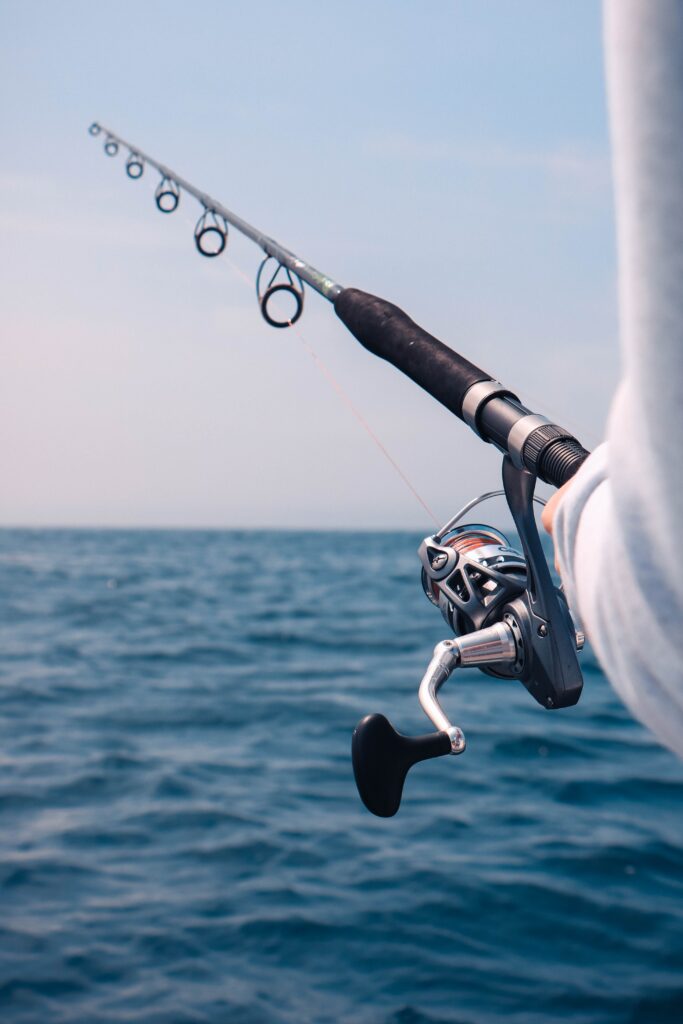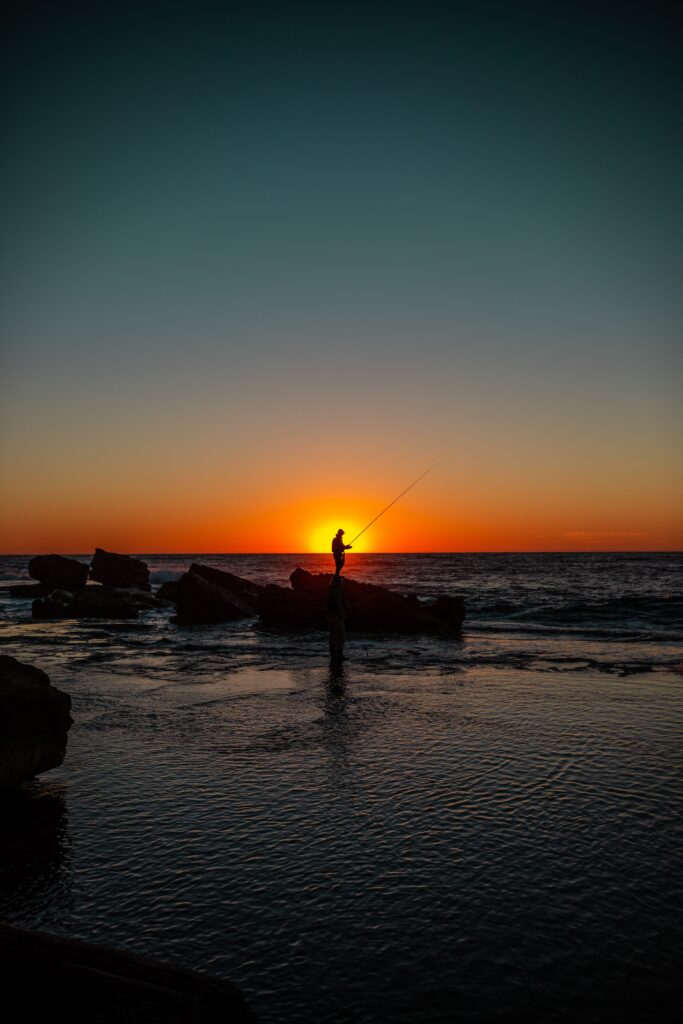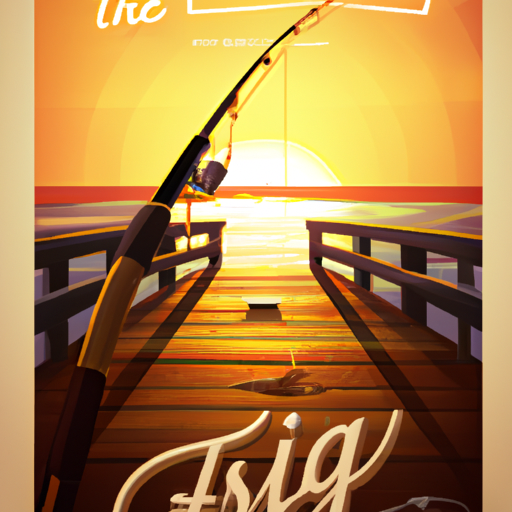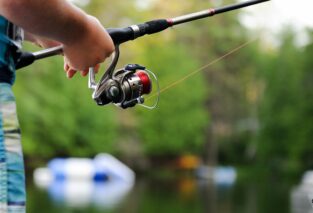Pier fishing is a popular and accessible way to enjoy the thrill of fishing without the need for a boat. If you’ve ever wondered whether you can go pier fishing but don’t know where to start, “Can You Go Pier Fishing: Tips and Techniques for Fishing from Piers” is the ultimate guide for you. Packed with valuable tips and techniques, this product provides everything you need to know to have a successful and enjoyable fishing experience from piers. Whether you’re a beginner or an experienced angler, this comprehensive guide is your ticket to a rewarding day of fishing.

Safety Precautions
Fishing from piers can be a fun and rewarding experience, but it’s important to prioritize safety while out on the water. By taking certain precautions, you can ensure a safe and enjoyable fishing trip. Here are some essential safety tips to keep in mind.
Choosing a safe pier
When selecting a pier for your fishing adventure, it’s crucial to consider safety factors. Look for a pier that is well-maintained and structurally sound. Avoid piers that show signs of deterioration or damage. Additionally, check if the pier has safety measures in place, such as guardrails or safety nets, to prevent accidental falls into the water.
Wearing appropriate fishing gear
Proper attire is an important aspect of fishing safety, especially when fishing from piers. Make sure to wear non-slip footwear to prevent accidents caused by slippery surfaces on the pier. It’s also advisable to wear a life jacket, especially if you’re not a confident swimmer or if the water conditions are rough. A life jacket can provide an extra layer of safety in case of an unexpected fall into the water.
Being aware of your surroundings
Before you start casting your line, take a moment to familiarize yourself with your surroundings. Observe the pier structure, looking out for any potential hazards such as loose boards or obstructions. Additionally, be mindful of other anglers and their fishing lines. Maintain a safe distance from fellow anglers to avoid entanglements and accidents. Keeping a watchful eye on your surroundings will help ensure a safe and enjoyable pier fishing experience.
Pier Selection
Choosing the right pier for your fishing expedition can greatly enhance your chances of success. Here are some factors to consider when selecting a pier for your fishing adventure.
Considering pier regulations and restrictions
Before you head out to your chosen pier, familiarize yourself with any regulations or restrictions that may be in place. Some piers may require a fishing license or have specific rules regarding catch limits or restricted areas. Make sure to research and abide by these regulations to ensure a legal and responsible fishing experience.
Identifying piers with good fishing spots
Not all piers are created equal when it comes to fishing opportunities. Research and seek out piers known for their productive fishing spots. These piers may have varying depths, underwater structures like reefs or drop-offs, and attract different species of fish. Gathering local knowledge through forums or speaking with experienced anglers can help you identify piers with good fishing potential.
Finding piers with amenities
While not essential, amenities can greatly enhance your fishing experience. Some piers have amenities like restrooms, cleaning stations, or bait and tackle shops nearby. These conveniences can make your fishing trip more comfortable and enjoyable. Consider whether these amenities are important to you when choosing a pier for your next fishing adventure.

Tides and Currents
Understanding and utilizing the impact of tides and currents can significantly improve your chances of success when pier fishing. Here’s what you need to know about the relationship between tides, currents, and fishing.
Understanding the impact of tides on fishing
Tides play a crucial role in the movement and feeding patterns of fish. During high tide, fish have access to new areas filled with food sources, making it an excellent time to fish. On the other hand, during low tide, fish may concentrate in deeper pockets of water, making them easier to target. By understanding the impact of tides on fish behavior, you can plan your fishing trips accordingly and maximize your chances of a successful catch.
Finding the best time to fish based on tides
Determining the best time to fish based on tide cycles is key to a fruitful pier fishing experience. Use a tide chart or consult local resources to determine the high and low tides for your chosen fishing location. Typically, anglers aim to fish during the incoming or outgoing tide, as these periods tend to offer the best fishing opportunities. Experimenting with different tide cycles will give you a better understanding of when fish are most active, increasing your chances of landing a catch.
Managing fishing in different currents
Piers located in areas with strong currents present unique fishing challenges. However, with proper techniques, you can still have a successful fishing session. When fishing in strong currents, it’s crucial to adjust your gear setup accordingly. Use heavier sinkers to keep your bait close to the bottom and reduce the effects of the current. It may also be beneficial to cast your line upstream to allow your bait to drift naturally towards the pier. Experimenting with different weights and fishing techniques will help you adapt to different current conditions and increase your chances of success.
Basic Pier Fishing Gear
Having the right fishing gear is essential for a successful pier fishing experience. From choosing the right rod and reel to selecting the appropriate bait, here’s what you need to know about basic pier fishing gear.
Choosing the right fishing rod and reel
When it comes to pier fishing, a versatile fishing rod and reel combo is a must-have. Opt for a medium to heavy-action spinning rod paired with a reliable spinning reel. This combination will provide you with the strength needed to handle larger fish species commonly found around piers. Additionally, ensure that your reel is capable of holding an adequate amount of fishing line, typically between 200-300 yards, to handle the potential long runs of strong fish.
Selecting the right fishing line and hooks
Selecting the appropriate fishing line depends on the type of fish you’re targeting and the fishing conditions. Monofilament fishing line is a popular choice for pier fishing due to its versatility and affordability. However, if you’re aiming to catch bigger fish or fishing in areas with rough structures, consider using a braided fishing line for added strength and durability.
When it comes to hooks, different fish species require different hook sizes and styles. Research the target species and consult local anglers or fishing guides for recommendations on hook sizes and types. Using the right hooks will increase your chances of hooking and landing your desired catch.
Picking the right bait for pier fishing
Selecting the right bait is essential for enticing fish to bite. The type of bait you choose will depend on the species you’re targeting and local fishing conditions. Common pier fishing baits include live and dead bait such as shrimp, squid, cut bait, or small fish like minnows. Research the preferred bait for your target species and identify local bait shops that offer a wide selection of fresh bait. Experimenting with different bait options will give you a better understanding of what works best in your chosen fishing location.

Setting up the Fishing Rig
A properly set-up fishing rig will increase your chances of hooking and landing fish while pier fishing. Here are some key elements to consider when setting up your rig.
Choosing appropriate weights and sinkers
The choice of weights and sinkers depends on the fishing conditions, the species you’re targeting, and the type of bait you’re using. In pier fishing, it’s common to use pyramid sinkers or egg sinkers to keep your bait anchored to the bottom. Heavier weights may be necessary in areas with strong currents, while lighter weights are suitable for calmer conditions. Experiment with different weight sizes to find the optimal setup for your fishing location and target species.
Using swivels and leaders for rigging
Adding swivels and leaders to your fishing rig is essential for preventing line twist and increasing the strength of your setup. Attach a swivel between your main fishing line and your leader line to prevent the line from twisting during retrieval. Leaders are typically made of a heavier monofilament or fluorocarbon line and are more resistant to abrasions caused by fish teeth or rough structures. Including a leader in your rig will provide additional protection against potential line breakages and increase your chances of landing the fish.
Setting up bobbers or floats for certain fish species
Using bobbers or floats can be advantageous when targeting fish that suspend in the water column or swim close to the surface. By setting up a bobber or float, you can present your bait at the desired depth and increase the visibility of your offering. This technique is particularly effective when targeting species like mackerel or pompano in nearshore areas. Experiment with different bobber sizes and setups to find the right setup for your target species and fishing conditions.
Techniques for Pier Fishing
To increase your chances of a successful catch when pier fishing, it’s crucial to employ the right fishing techniques. Here are some techniques commonly used by anglers when fishing from piers.
Casting from a pier
Casting from a pier allows you to cover a wider area and reach fish that are farther from the structure. When casting, stand at the edge of the pier and use a slightly sidearm motion to propel your bait or lure towards your desired target area. Pay attention to wind direction and adjust your casting angle accordingly to minimize tangles and improve accuracy. Experiment with different casting distances and retrieve speeds to find the technique that works best for your target species.
Drift fishing from a pier
Drift fishing involves presenting your bait or lure as it drifts naturally with the current. This technique is particularly effective when fishing in areas with strong currents. To drift fish from a pier, cast your bait upstream and allow it to drift back towards the pier. Keep the line semi-taut and be ready to detect any bites or irregular activity. By adopting this technique, you can cover a larger fishing area and entice fish that are actively feeding in the current.
Bottom fishing techniques
Bottom fishing from a pier involves presenting your bait on or close to the seafloor, targeting species that dwell near the bottom. This technique is effective for species like flounder, snapper, or grouper. To bottom fish, use a sinker to keep your bait anchored on or near the bottom and allow it to sway naturally with the movement of the water. Pay attention to any bites or taps, as bottom-dwelling fish are known to attack bait with subtle hits. By mastering bottom fishing techniques, you can increase your chances of landing prized bottom-dwelling species.

Targeting Specific Fish Species
Different piers offer varying opportunities to target specific fish species. Understanding the behavior, feeding patterns, and preferred habitats of your target species can greatly improve your chances of success. Here are some tips for catching popular pier fish species.
Tips for catching popular pier fish species
-
Snook: Target snook during periods of low light, such as dawn or dusk, using live bait like shrimp or finger mullet. Focus your efforts around structures such as pilings or jetties where snook commonly seek shelter.
-
Redfish: Look for redfish around pilings, in tidal creeks, and in shallow flats. Use live or cut bait like mullet or shrimp cast near sandy or grassy areas during the incoming tide.
-
Sheepshead: These finicky feeders are commonly found near structures like pilings or docks. Use fiddler crabs or shrimp as bait, and make sure to set the hook quickly when you feel a bite.
-
Spanish Mackerel: Target Spanish mackerel using flashy lures like silver spoons or small jigs. Cast and retrieve rapidly to mimic the fast movement of baitfish. Look for diving birds or surface disturbances to locate feeding schools.
Understanding their behavior and feeding patterns
Each fish species has unique behaviors and feeding habits that dictate when and where they are most likely to bite. Researching your target species will give you valuable insights into their preferred habitats, feeding times, and preferred bait. For example, snook are known for their ambush tactics and tend to feed during low-light periods, while sheepshead are more likely to bite during periods of high tide when they have access to more food sources.
Using specific bait and lures for different species
The choice of bait or lures can greatly impact your success when targeting specific fish species. Research the preferred bait or lures for your target species and experiment with different presentations. Live bait, such as shrimp or minnows, is effective for many pier species, while lures like spoons, jigs, or soft plastics can entice aggressive predators like mackerel or snook. Keep in mind that different fish species may have specific preferences, so it’s essential to adapt your bait choices accordingly.
Dealing with Common Challenges
Pier fishing can present various challenges. However, with the right mindset and a few strategies, you can overcome these obstacles. Here’s how to deal with some common challenges encountered during pier fishing.
Overcoming pier crowding
Pier fishing can sometimes get crowded, especially during peak fishing seasons or weekends. To navigate through pier crowding, arrive early in the morning or choose less popular fishing times. Consider using lighter tackle to target smaller fish species that may be overlooked by other anglers. Additionally, maintaining a friendly and respectful attitude towards fellow anglers can contribute to a more enjoyable fishing experience for everyone.
Navigating through seaweed and debris
Seaweed and other types of debris can be a hindrance when pier fishing. To combat this challenge, consider using a heavier sinker to keep your bait closer to the bottom and reduce the chances of getting snagged. Modifying your fishing rig by adjusting the leader length or using weedless hooks can also help minimize the effects of seaweed or debris. Lastly, be patient and persistent, as fish often lurk around areas with debris, seeking shelter and feeding opportunities.
Handling rough weather conditions
Fishing from piers exposes anglers to the elements, including rough weather conditions. To ensure safety and comfort during inclement weather, it’s important to stay informed about the forecast before your fishing trip. If foul weather is on the horizon, consider rescheduling your fishing expedition. If you find yourself caught in rough weather, seek shelter and avoid fishing near exposed areas or during lightning storms. Dress appropriately and wear layers to protect yourself from wind, rain, or chilly temperatures.

Etiquette and Best Practices
Respecting other anglers, the environment, and local fishing regulations is integral to maintaining a positive pier fishing experience. Here are some etiquette and best practices to follow when fishing from piers.
Respecting other anglers’ space
Piers can get crowded, and it’s important to respect the personal space of fellow anglers. Avoid casting your line too close to others to prevent entanglements and allow everyone to fish comfortably. If you need to move around on the pier, do so with caution and be mindful of other anglers’ fishing lines. A friendly and considerate attitude towards fellow anglers will make the pier fishing experience more enjoyable for everyone.
Properly disposing of trash and fishing line
To protect the environment and wildlife, it’s essential to dispose of trash and fishing line responsibly. Dispose of any waste or leftover bait in designated trash cans or facilities. Avoid throwing fishing line into the water, as it can entangle marine life and pose a threat to their survival. Many piers have designated fishing line recycling bins, where you can properly discard your used fishing line. By following these practices, we can collectively protect the marine environment we enjoy while pier fishing.
Following local fishing regulations and seasons
Each location may have specific fishing regulations and seasonal restrictions in place. It’s crucial to research and adhere to these regulations to ensure a legal and sustainable fishing experience. Familiarize yourself with catch limits, size restrictions, and closed seasons for certain fish species in your area. Stay informed of any updates or changes to fishing regulations to ensure you’re fishing responsibly and in accordance with local laws.
Additional Tips and Tricks
Here are a few additional tips and tricks to help enhance your pier fishing experience:
Bringing essential accessories for pier fishing
Be prepared by bringing essential accessories such as sunscreen, a hat, polarized sunglasses, a fishing tackle box, and a cooler for your catch. These items will ensure your comfort and allow you to store your gear and any fish you may catch. Additionally, consider bringing a folding chair or stool for added comfort during long hours of fishing.
Being patient and observant
Pier fishing requires patience and observation. Fish behavior can vary throughout the day, so be prepared to wait for the right moment to strike. Pay attention to the water’s surface for any signs of fish activity, such as baitfish jumping or diving birds. Being patient and observant will help you make strategic decisions on when and where to cast your line.
Staying prepared for different scenarios
Fishing conditions can change unexpectedly, so it’s crucial to stay prepared for different scenarios. Carry a small first aid kit in case of minor injuries, and keep a grip or gloves handy for better control when handling fish. Additionally, carry extra tackle and spare fishing line in case of breakages or snags. Being prepared for various situations will ensure a smooth and enjoyable pier fishing experience.
In conclusion, pier fishing can be an exciting and rewarding venture if you prioritize safety, choose the right pier, understand tides and currents, utilize proper gear and techniques, target specific species, overcome common challenges, practice etiquette, and follow best practices. By incorporating these tips, you’re well on your way to a successful and enjoyable pier fishing experience. Happy angling!





